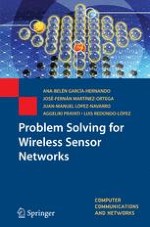Problem Solving for Wireless Sensor Networks delivers a comprehensive review of the state of the art in the most important technological issues related to Wireless Sensor Networks (WSN). It covers topics such as hardware platforms, radio technologies, software technologies (including middleware), and network and deployment aspects.
This book discusses the main open issues inside each of these categories and identifies innovations considered most interesting for future research.
Features: - Hardware Platforms in WSN, - Software Technologies in SWN, - Network Aspects and Deployment in WSN, - Standards and Safety Regulation for WSN, - European Projects Related to WSN, - WSN Application Scenarios at both utility and technical levels.
Complete, cutting-edge and resulting from the work of many recognized researchers, Problem Solving for Wireless Sensor Networks is an invaluable reference for graduates and researchers, as well as practitioners.
